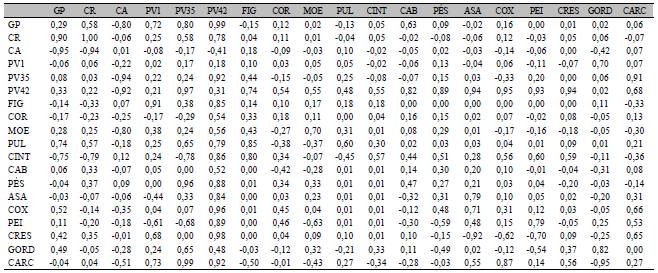ABSTRACT
This study aimed to estimate genetic parameters for several economic traits in F2 populations developed by Embrapa Swine and Poultry National Research Center, through reciprocal crosses of broilers and layer lines. Furthermore, sex and reciprocal cross effects were evaluated. Weights at 1, 35 and 42 days of age; weight gain, feed intake and feed conversion between 35 and 41 days of age; weights of the lungs, heart, liver, gizzard, breast, thighs, carcass, back, wings, head, legs and abdominal fat; and intestine length were studied. Residual and genetic additive variance components, heritability coefficients, and genetic and phenotypic correlations were estimated. Males were heavier than females for all studied traits in both reciprocal crosses, except for abdominal fat weight in chickens from the male layer x female broiler cross. Chickens from male layer x female broiler cross were heavier than those from its reciprocal cross, also having larger intestine length and gizzard, carcass, back, breast and head weights. The heritability coefficients were high for feed intake and body weight at birth, gizzard, and abdominal fat. The estimated phenotypic correlations were mostly lower or moderate, however, most high genetic correlations were observed. We found significant differences in heritability coefficients for some traits due to the reciprocal cross, which may be due maternal, cytoplasmic, sex-linked or imprinting effects.
Keywords:
variance components; correlation; heritability; poultry



